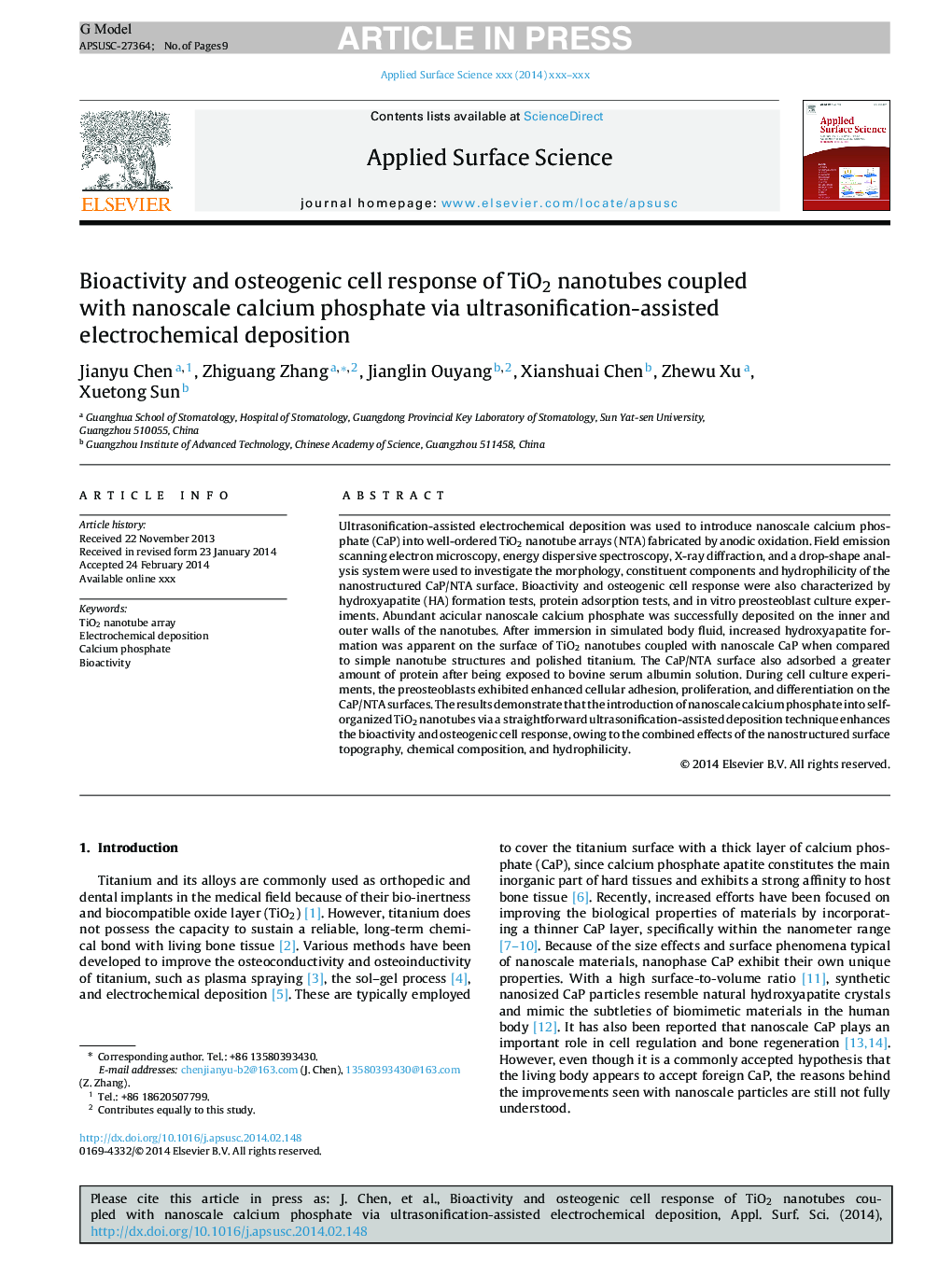| Article ID | Journal | Published Year | Pages | File Type |
|---|---|---|---|---|
| 5350265 | Applied Surface Science | 2014 | 9 Pages |
Abstract
Ultrasonification-assisted electrochemical deposition was used to introduce nanoscale calcium phosphate (CaP) into well-ordered TiO2 nanotube arrays (NTA) fabricated by anodic oxidation. Field emission scanning electron microscopy, energy dispersive spectroscopy, X-ray diffraction, and a drop-shape analysis system were used to investigate the morphology, constituent components and hydrophilicity of the nanostructured CaP/NTA surface. Bioactivity and osteogenic cell response were also characterized by hydroxyapatite (HA) formation tests, protein adsorption tests, and in vitro preosteoblast culture experiments. Abundant acicular nanoscale calcium phosphate was successfully deposited on the inner and outer walls of the nanotubes. After immersion in simulated body fluid, increased hydroxyapatite formation was apparent on the surface of TiO2 nanotubes coupled with nanoscale CaP when compared to simple nanotube structures and polished titanium. The CaP/NTA surface also adsorbed a greater amount of protein after being exposed to bovine serum albumin solution. During cell culture experiments, the preosteoblasts exhibited enhanced cellular adhesion, proliferation, and differentiation on the CaP/NTA surfaces. The results demonstrate that the introduction of nanoscale calcium phosphate into self-organized TiO2 nanotubes via a straightforward ultrasonification-assisted deposition technique enhances the bioactivity and osteogenic cell response, owing to the combined effects of the nanostructured surface topography, chemical composition, and hydrophilicity.
Related Topics
Physical Sciences and Engineering
Chemistry
Physical and Theoretical Chemistry
Authors
Jianyu Chen, Zhiguang Zhang, Jianglin Ouyang, Xianshuai Chen, Zhewu Xu, Xuetong Sun,
